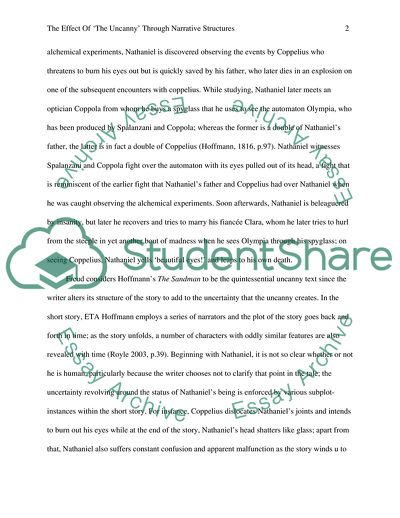Cite this document
(The Effect of the Uncanny Through Narrative Structures Case Study, n.d.)
The Effect of the Uncanny Through Narrative Structures Case Study. https://studentshare.org/literature/1805830-the-effect-of-the-uncanny-through-narrative-structures
The Effect of the Uncanny Through Narrative Structures Case Study. https://studentshare.org/literature/1805830-the-effect-of-the-uncanny-through-narrative-structures
(The Effect of the Uncanny Through Narrative Structures Case Study)
The Effect of the Uncanny Through Narrative Structures Case Study. https://studentshare.org/literature/1805830-the-effect-of-the-uncanny-through-narrative-structures.
The Effect of the Uncanny Through Narrative Structures Case Study. https://studentshare.org/literature/1805830-the-effect-of-the-uncanny-through-narrative-structures.
“The Effect of the Uncanny Through Narrative Structures Case Study”. https://studentshare.org/literature/1805830-the-effect-of-the-uncanny-through-narrative-structures.


